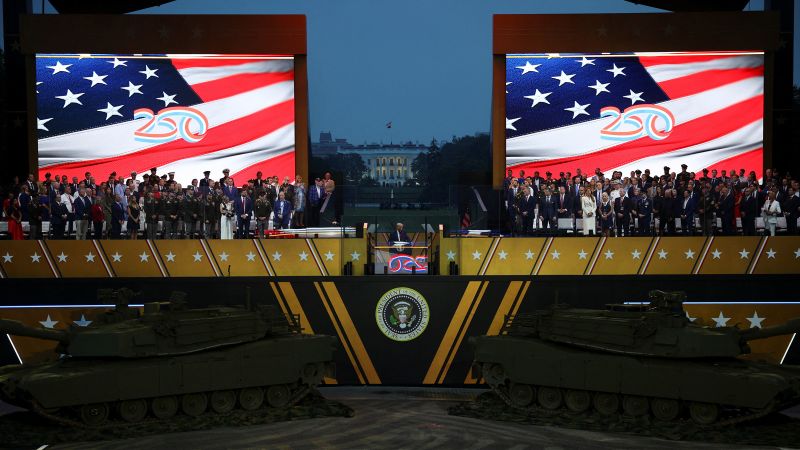On a remarkable Saturday, President Donald Trump delivered a rousing tribute to the United States Army, dubbing it the “greatest, fiercest and bravest fighting force” during a remarkable military parade in the heart of the nation’s capital. This significant event coincided with the Army’s 250th anniversary celebration, featuring a grand display of military hardware, cultural significance, and a heartfelt salute to the men and women in uniform. It marked a pivotal moment in not only military history but also for the Trump administration, as it resonated with themes of patriotism amidst ongoing global conflicts.
Trump’s fervent remarks were directed at those who oppose the United States, delivering a firm message: “Time and again, America’s enemies have learned that if you threaten the American people, our soldiers are coming for you.” This assertion encapsulated the unwavering resolve of the U.S. military and sought to assure citizens that their safety and freedom are fiercely guarded by dedicated soldiers. He emphasized the pride felt by Americans, stating that the Army is pivotal in maintaining freedom and strength while expressing collective gratitude to the soldiers assembled at the National Mall.
Interestingly, this military spectacle also aligned with Trump’s 79th birthday, adding a personal layer to the celebrations. Crowds across the nation were engaging in “No Kings” protests, condemning what the organizers described as authoritarian policies. Despite the demonstrations, Trump was met with an extravagant reception at the parade; a 21-gun salute welcomed him as onlookers spontaneously sang “Happy Birthday to You,” creating a juxtaposition between celebration and protest.
The parade showcased an impressive array of military equipment, with several million pounds of machinery parading through the streets of Washington D.C., including M1-A1 Abrams tanks and Stryker fighting vehicles, along with Howitzers and other artillery. With nearly 7,000 soldiers participating, this event marked one of the largest military displays seen in decades within the capital. As the parade unfolded, the history of the Army was narrated through different eras, each represented with vintage uniforms and equipment that traced the Army’s 250-year journey through significant conflicts, starting from the Revolutionary War.
While the planning for this extensive event has been in the pipeline for two years, the military parade is a vision that originated during Trump’s first term, though it was initially canceled due to the envisaged costs and the optics of such a show of force. Nonetheless, enthusiasm for a patriotic exhibition remained, and Trump assured that this celebration would be unprecedented, promising the American public an event filled with national pride.
Despite the rain and potential inclement weather, Trump remained determined that the parade would proceed as scheduled. Some aerial displays, like the F-22 flyover, were ultimately canceled due to unfavorable conditions, but the fundamental spirit of the celebration stayed intact.
As the president basked in the grandeur of the parade, protests against his administration unfolded concurrently across the country. The “No Kings” movement sought to combat what it perceived as a surge in authoritarianism and militarized governance. Although the organizers deliberately avoided demonstrations in D.C. to maintain focus on the parade, some dissenters did take to the streets in the capital, brandishing signs with messages like “No Fascist USA.”
The events of the day reflected an undercurrent of tension in American society, heightened further by a week of protests against Immigration and Customs Enforcement (ICE) actions in various cities, including Los Angeles. President Trump had mobilized 4,000 California National Guard members to safeguard federal properties amidst escalating civil unrest, leading to a precautionary mobilization of National Guard units in several other states, including Texas and Missouri, ahead of anticipated protests.
In conclusion, the day comprised a striking contrast between military celebration and civic dissent, capturing a snapshot of the nation’s current climate. It illustrated the complexities of patriotism and governance in contemporary America, exposing a populace grappling with themes of national identity, authority, and civil liberties. Through the spectacle of military might and the voices of opposition, the fabric of American democracy remained on display, reflecting both pride and contention in equal measure.



